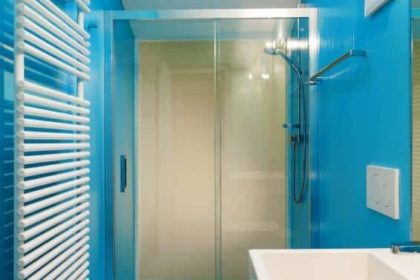Daylighting Tips

Daylighting Tips
If you wish to optimize daylighting for your building design but don’t wish (or have the time) to do a variety of simulations for different purposes such as illumination levels in the space, shading analyses, sizing windows/ skylights etc., there some basic tips to follow that will help you take advantage of this wonderful natural resource. Here are daylighting tips that can be used with any building.
Daylighting Tips – Consider Cardinal Directions
When placing windows it’s important to keep the cardinal directions in mind and which direction each of your facades face. North facing windows provide the most consistent light but can be a big source of heat loss and thermal discomfort in winter. Similarly south facing windows can be shaded to keep out the summer sun but let winter sunlight in to warm the space. Low east and west sun angles are not possible to block completely. But horizontal louvers or vertical fins work well on the east and west side windows while overhangs work better on south facing glazing.
Sustainable tools by design is an excellent website that will help you design simple louvers, fins and overhangs. If you are comfortable with Sketch-up that is a good option for designing a window shading strategy.
Daylighting Tips – Limit Glazing
It’s generally best to limit your glazing to 30% of the wall area for the sake of energy efficiency. Every window is a hole in the wall where the insulating capacity of the wall drops from about R-20 to R-2. Similarly every skylight reduces the overall insulating capacity of the roof; skylight areas should be limited to 2% – 3% of roof area.
For windows to effectively daylight a space, they should be placed as high up as possible. The rule of thumb is that windows can daylight a space for a distance of up to 1.5 to 2 times their head height. It is best to separate “daylight glazing” from “view glazing”. The former can take the form of a continuous strip window running higher up, closer to the ceiling. Whereas view glazing takes the form of punched out openings located per the interior space layout, façade aesthetics and exterior views. Refrain from placing glazing where it cannot provide any view or daylighting benefits, such as below desk height.
Seek Skylight Opportunities

Daylighting Tips – Seek Skylight Opportunities
Another idea to keep in mind is that lower level floors that don’t have access to daylight through skylights can have higher ceiling heights. Higher ceilings enable a deeper daylight zone in the space. Where you have the opportunity to provide skylights, space smaller skylights on center at 1.5 times the ceiling height and place them close to the wall of the room below. This arrangement will yield more even illumination below rather than a large skylight.
Ultimately you will only garner savings if you tie your daylighting strategy into effective lighting controls that dim or turn off lights based on daylight saturation in the space.
BuildItSolar is a great website with links to many useful resources you can use to increase your knowledge of the subject. Good luck!



